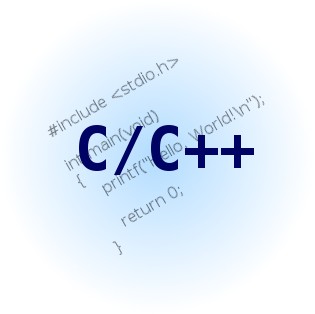
To identify
the portion of line that is inside or outside a specified region
The region
against which a line is to be clipped is called clipping window. The portion of
lines inside the clipping window are retain for display.
ALGORITHM:
1.
Start
2.
Read two end points of a line P1,P2
(x1,y1) and (x2,y2)
3.
Read two corners of window(wx1,wy1) and (wx2,wy2)
4.
Assign the region codes for two end
points using following steps
a.
Set bit 1 if x < wx1
b.
Set bit 2 if x>wx2
c.
Set bit 3 if y<wy2
d.
Set bit 4 if y> wy1
5.
Check for the visibility of the
line
a.
If region codes for both end points
are 0 then the line is completely visible. Draw the line. Go to 10
b.
If the region codes are not zero
and the logical AND ing of them is also non zero then the line is completely
invisible. Go to 10
c.
If the region codes for two end
points do not satisfy the conditions in 5 a and 5 b the line is partially
visible
a.
If the region codes foe both end
points are non zero find the intersection point P1’ and P2’ with boundary edges
of clipping window with respect to P1 and P2
respectively
b.
If the region code for any one end
point is non zero then find intersection point P1’ or P2’ with the boundary
edge of the clipping window with respect to it.
7.
Divide the line segments considering
the intersection points
8.
Reject the line segment if any one
end point of it appears outside the clipping window
9.
Draw the remaining line segments
10. Stop.
PROGRAM:
#include<stdio.h>
#include<conio.h>
#include<dos.h>
#include<graphics.h>
#include<stdlib.h>
typedef struct coord
{
int x,y;
char code[4];
}PT;
void drawwindow();
void drawline(PT p1,PT p2,int c1);
PT setcode(PT p);
int visibility(PT p1,PT p2);
PT resetendpt(PT p1,PT p2);
void main()
{
int gd=DETECT,gm,v;
PT p1,p2,ptemp;
initgraph(&gd,&gm,"");
cleardevice();
printf("\t\tCOHEN-SUTHERLAND LINE CLIPPING ALGORITHM");
printf("\nEnter the two end points p1(x,y)");
scanf("%d%d",&p1.x,&p1.y);
printf("Enter the two end points p2(x,y):");
scanf("%d%d",&p2.x,&p2.y);
cleardevice();
printf("\t\tCLIPPING WINDOW");
drawwindow();
getch();
printf("\tCOHEN-SUTHERLAND LINE CLIPPING ALGORITHM");
printf("\n\t\tBEFORE CLIPPING");
drawline(p1,p2,4);
getch();
p1=setcode(p1);
p2=setcode(p2);
v=visibility(p1,p2);
switch(v)
{
case 0:
cleardevice();
//printf("\t\tCLIPPING WINDOW");
drawwindow();
drawline(p1,p2,15);
break;
case 1:
cleardevice();
drawwindow();
break;
case 2:
cleardevice();
p1=resetendpt(p1,p2);
p2=resetendpt(p2,p1);
drawwindow();
printf("\tCOHEN-SUTHERLAND LINE CLIPPING ALGORITHM");
printf("\n\t\tAFTER CLIPPING");
drawline(p1,p2,15);
break;
}
getch();
closegraph();
//return(0);
}
void drawwindow()
{
setcolor(RED);
setlinestyle(DOTTED_LINE, 1, 1);
line(150,100,100,100);
line(150,100,150,50);
line(450,100,500,100);
line(450,100,450,50);
line(450,350,500,350);
line(450,350,450,400);
line(150,350,150,400);
line(150,350,100,350) ;
line(150,100,100,100);
line(150,100,150,50);
setlinestyle(SOLID_LINE, 1, 1);
line(150,100,450,100);
line(450,100,450,350);
line(450,350,150,350);
line(150,350,150,100);
outtextxy(450,30,"1001");
outtextxy(470,200,"1000");
outtextxy(470,370,"1010");
outtextxy(300,370,"0010");
outtextxy(120,370,"0110");
outtextxy(120,200,"0100");
outtextxy(120,30,"0101");
outtextxy(300,30,"0001");
outtextxy(300,200,"0000");
}
void drawline(PT p1,PT p2,int c1)
{
setcolor(c1);
line(p1.x,p1.y,p2.x,p2.y);
}
PT setcode(PT p)
{
PT ptemp;
if(p.y<100)
ptemp.code[0]='1';
else
ptemp.code[0]='0';
if(p.y>350)
ptemp.code[1]='1';
else
ptemp.code[1]='0';
if(p.x>200)
ptemp.code[2]='1';
else
ptemp.code[2]='0';
if(p.x<150)
ptemp.code[3]='1';
else
ptemp.code[3]='0';
ptemp.x=p.x;
ptemp.y=p.y;
return(ptemp);
}
int visibility(PT p1,PT p2)
{
int i,flag=0;
for(i=0;i<4;i++)
{
if((p1.code[i]!='0')||(p2.code[i]!='0'))
flag=1;
}
if(flag==0)
return(0);
for(i=0;i<4;i++)
{
if((p1.code[i]==p2.code[i])&&(p1.code[i]=='1'))
flag=0;
}
if(flag==0)
return(1);
return(2);
}
PT resetendpt(PT p1,PT p2)
{
PT temp;
int x,y,i;
float m,k;
if(p1.code[3]=='1')
x=150;
if(p1.code[2]=='1')
x=450;
if((p1.code[3]=='1')||(p1.code[2]=='1'))
{
m=(float)(p2.y-p1.y)/(p2.x-p1.x);
k=(p1.y+(m*(x-p1.x)));
temp.y=k;
temp.x=x;
for(i=0;i<4;i++)
{
temp.code[i]=p1.code[i];
if(temp.y<=350 && temp.y>=100)
return(temp);
}
if(p1.code[0]=='1')
y=100;
if(p1.code[1]=='1')
y=350;
if((p1.code[0]=='1')||(p1.code[1]=='1'))
{
m=(float)(p2.y-p1.y)/(p2.x-p1.x);
k=(float)p1.x+(float)(y-p1.y)/m;
temp.y=y;
temp.x=k;
for(i=0;i<4;i++)
temp.code[i]=p1.code[i];
return(temp);
}
}
else
return(p1);
return(p2);
}





 Mohanraj
Mohanraj

 Posted in:
Posted in: 





1 comments:
why the return p2 in the end?
Post a Comment